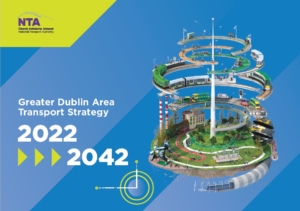No, I am well aware of the numbers on transit systems that serve airports, that the actual airport travellers are well lower than the local passengers, even on substantial operations like the Piccadilly Line in London. They just form a useful supplement, and get a disproportionate amount of the publicity. They are commonly more convenient to the staff than to air passengers.
Tara Street being the busiest Dart station is just indicative of the overall poor alignment, being as it is on the wrong side of the river for the bulk of the central commerce. It would usefully be supplemented by a station at say Abbey Street, more central and which it rolls over non stop. Yes, it was an appropriate use of an existing railway alignment at the start, but is one of many examples around that just because you say, or name, a station as the "City Centre", doesn't mean that it is actually there!
I'm glad that ludicrous Airlink bus (although it also used The Quays and the Port Tunnel) has been replaced by something more appropriate. Notably hardly anyone got on it until getting to Connolly, when it filled up with those presumably in the know.
Sorry, but are we reduced to posting daft strawman arguments that the DART line is in the wrong place now? It is where it is, and that is not going to change. So let's at least keep the discussion realistic.
There remain long term plans for a DART Underground tunnel connecting the northern line through the south city centre and linking with Heuston and onwards towards Hazelhatch. In the meantime, DART+ is progressing through the planning process.
As for Tara Street's location, there is no need for yet another DART station on the north side of the loop line bridge - Connolly is only a 5 minute walk away from Abbey Street, as indeed is Tara Street. Tara Street Station is fine for the city centre, which, despite what you seem to think, very much straddles both sides of the river. The station serves the immediate south docklands area, and is a short walk from Trinity College, Temple Bar and O'Connell Street. When the station and the area around Tara Street are redeveloped, there will be a direct walkway towards College Street from opposite the new exit which will improve access further to the south central.
Regarding Metrolink, I'd also point out that the public transport lobby groups here support the proposed route. The route design has gone through two non-statutory consultations, and, subject to government approval, is about to go to Railway Order stage to An Bórd Pleanála, the statutory planning authority.
I think that you should probably stop digging holes for yourself here - trying to tell someone who lives in Dublin and works in the city centre (i.e. me!) that they don't know where the city centre is located is a tad over the top.


